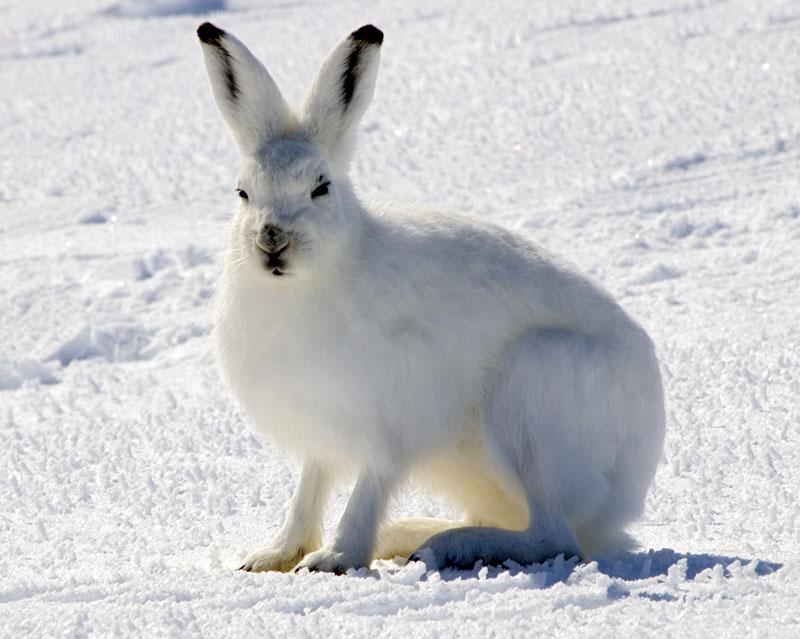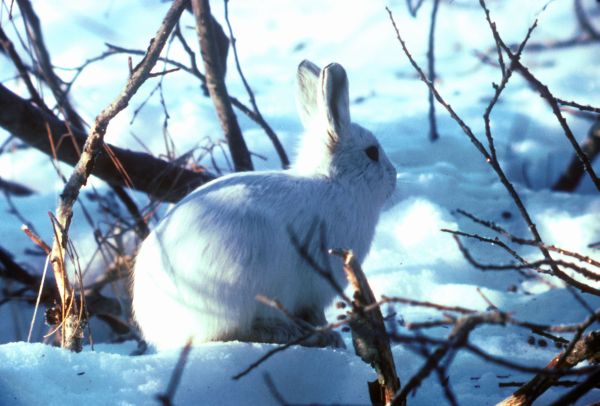Wildlife North America . com North American Animals - mamals, birds, reptiles, insects |
Arctic Hare (Lepus arcticus)
Arctic Hare photographed at Nunavut, Canada. Photograph by Steve Sayles. Some rights reserved. (view image details) 
Arctic Hare Photograph by U.S. Fish and Wildlife Service. License: Public Domain. (view image details)
ARCTIC HARE FACTS
DescriptionArctic hares are white with black ear-tips in winter. In summer their color varies with location - hares from the tundra are blue-gray, and those from Ellesmere Island and Greenland are almost white. The underfur is dense and gray. They have strong claws to help them dig for food in the snow. Other Names Labrador Hare, Polar Hare, Greenland Hare, American Arctic Hare, Canadian Arctic Hare, Alpine Hare, Size Length: 56 - 63cm. Weight: 3 - 5kg. Arctic Hares are larger and heavier than Snowshoe Hares. Environment their habitat is tundra where some vegetation can grow in summer, and the snow is not too deep for them to dig under for food in winter. They are found in lowland and mountain territory. Food They eat mosses, lichens, buds, berries, sedges, seaweed, bark, twigs and roots. Breeding Females give birth to litters of up to 8 young (average 5) after a gestation period of 30 days. The young are weaned after 56 - 72 days. Young are born in the summer, with gray coats that turn white when they are 2-3 weeks old. Range The Arctic Hare is found in the tundra of Canada from Newfoundland and Labrador to the Northwest Territories. Also found on Greenland an other arctic islands. Classification
Relatives in same Genus Snowshoe Hare (L. americanus) Black-tailed Jackrabbit (L. californicus) Alaskan Hare (L. othus) White-tailed Jackrabbit (L. townsendii) Home | Mammals | Reptiles | Birds | Insects | Privacy Policy | Disclaimer | Contact Us |